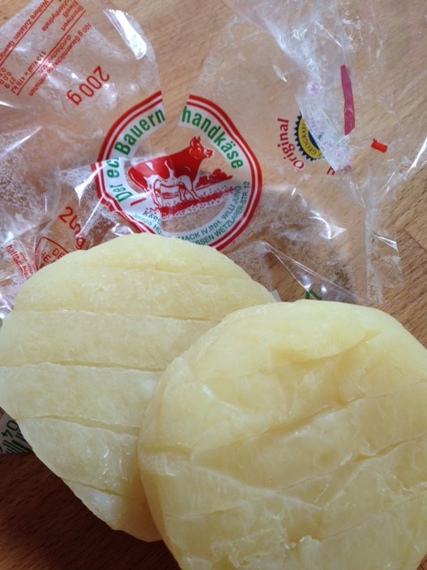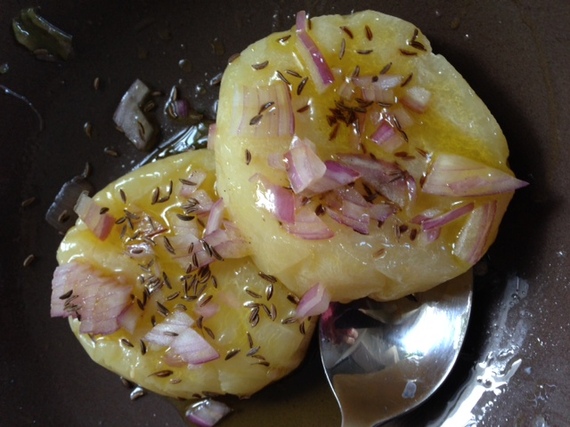When you think of Germany you tend to think beer or even wine (Riesling), but cheese isn't normally the first thing that comes to mind. Of course for me cheese, specifically handkäse, is one of the first things that comes to mind.
My father grew up in the small town of Erbach along the Rhine River, in the German State of Hesse. Growing up, many family trips were spent visiting this region. On our vacations I always looked forward to eating fresh gooseberries, big salty pretzels, and handkäse. On more than one occasion I have stuffed packages of handkäse into my suitcase, my poor clothes left smelling like an old barn by the end of the trip. Outside of Germany, handkäse is a somewhat misunderstood cheese. It can't be sliced, grated, or melted. In other words it's nothing like what we think of when we think of cheese.
Now that I'm grown the family trips to Germany don't happen as often. But this year everyone's schedules happened to be in sync. So last week I took a quick flight from Athens to Frankfurt, and spent 4 days in the Rheingau with my family. As soon as my plane landed we began to make our dinner plans. I wasn't craving schnitzel or würst. I had been in Germany for less than an hour and already visions of stinky cheese were dancing in my head. Lucky for me, the love of handkäse runs in the family. There was no debate or coin toss that night. We all agreed. We were eating handkäse for dinner!
Handkäse, or "hand cheese" in English is made from soured skim milk and contains only 1% milk fat. It's one of the few cheeses in the world that is naturally almost fat free, hence its inability to melt or grate nicely. The curd gets pressed and turned by hand (at least in the old days it was done by hand) into little disks. The cheese is typically sold in a packet, with 2 to 4 disks per package. The cheese itself is somewhat firm and translucent, making it look more like a wax mold experiment and less like a type of käse.
Between the texture and pungent aroma (think along the lines of old gym socks), it hasn't gotten much love outside of its native land. Handkäse is served in a very specific way. Typically the cheese is left in a bowl at room temperature and marinated with oil (I use olive oil), a hint of vinegar, raw onion and caraway seeds.
The only variation on this dish is whether or not to serve it with onions and/or caraway seeds. Personally, I like mine with "the works," and add both. The cheese is normally served with slices of buttered dark German bread (such as Rye) and a nice glass of Riesling. You place the cheese and the marinating sauce on top of the bread. It's eaten with a fork and knife, as if it were a steak.
Because handkäse is not frequently eaten outside of Germany, most Americans have no idea what to make of this strange cheese. To be fair, I have never seen it served on a menu outside of the Hesse region of Germany. So it's hardly surprising that most people outside of its birth country aren't familiar with it.
You can find the cheese sold in the U.S. in some German specialty food shops. If you do come across this cheese I encourage you to pick it up and try it. But please, no grating on pasta or trying to make fondue. If this cheese is to be appreciated there is only one way to eat it, and that is to stick with tradition!
On my next posting I will be writing all about the small town of Erbach , including where to stay, where to eat, and a few interesting historical (and familial) facts about the town. Guten Appetit!



